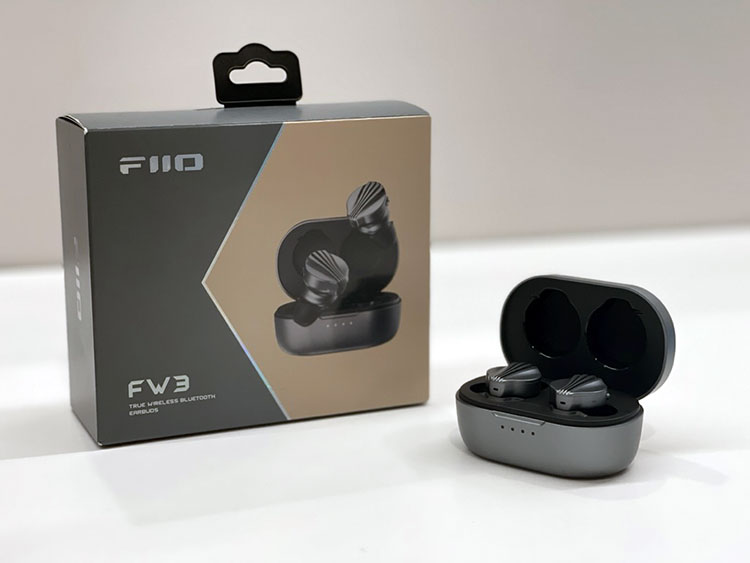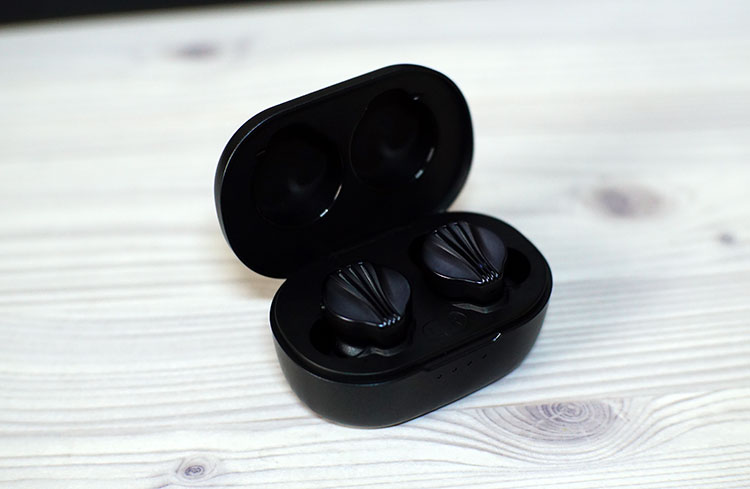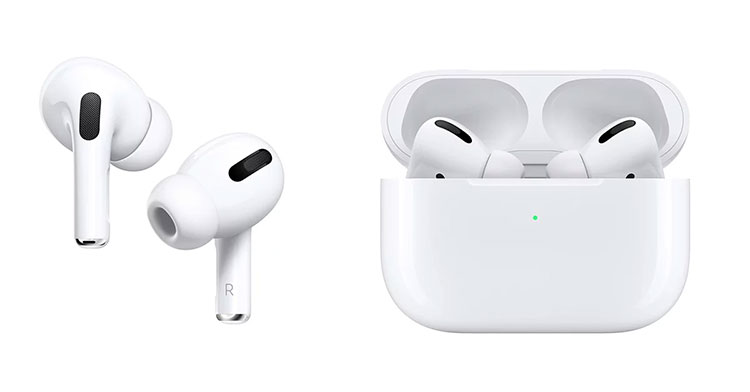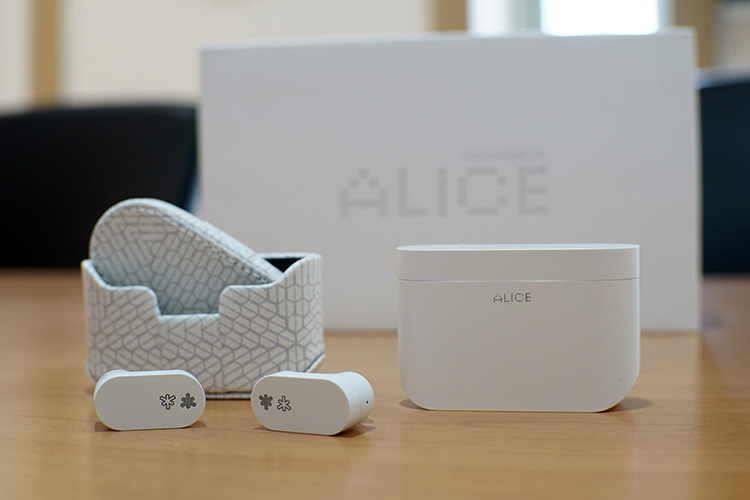Wireless Performance
Stability and Range
I have used the FW3 during my bike errands and there were no noticeable issues when using them. There are packet drops from time to time but this is nothing unusual for TWS devices.
The range is also pretty good. I’ve tried leaving my phone on my desk and attending to a package delivery 5 meters away, which did not drop the connection. Real-world use case proves it to be pretty useful for an active lifestyle.
Latency
Equipped with Bluetooth 5.2, I had high confidence in FW3’s Bluetooth performance. There was no noticeable latency with normal use. In fact, FW3 has a gaming mode that ensures low latency, although battery intensive. Day-to-day, it just fits perfectly as both a music and conference call companion.
Select Comparisons
FiiO FW5
Technical
The FiiO FW3 and FW5 have the same battery life – 7 hours of listening time and an additional 21 hours. Based on the specification, both carry the same battery capacity.
Both also carry the same QCC5141 chip, capable of BT 5.2 connectivity. They also have the same high-performance DAC chip – the AK4332.
In terms of driver configuration, the FW3 has a carbon-based single dynamic driver while the FW5 has a hybrid driver configuration with a 10mm dynamic driver with a DLC diaphragm + PU and 2 BA Knowles driver.
Design
There is very little difference between the two. The monitors look identical, with just color differences. The FW5 is in black color with a bluish tint. The FW3 on the other hand has 2 options – a white and grey version.
The cradle would be the biggest difference between the design. The FW3’s cradle is a bit bigger and has the FiiO logo on top. The FW5’s cradle looks more premium and minimalist looking.
Performance
The bass is punchier on the FW5. Although both are on the shy side, the FW5 just has a bit of a rumble and a better-textured bass. Both do have a good sense of control, which is great at both price points.
Both have a slightly recessed midrange region. Delving into the technicalities, the midrange of the FW5 is evidently more detailed than the FW3. When listening to the vocals, the FW5 displays more depth in the vocal qualities than the FW3.
Also, between the two, the FW3 has a warmer tint, as the FW5 tends to be on the neutral side, perhaps because of the dual BA drivers.
The treble is where the difference between the two is more evident. Despite being tuned similarly, the FW5 has a more elevated treble than the FW3. The texture on the upper frequencies is more defined, with those BA drivers giving a higher level of clarity and detail.
Of the two, the FW5 has better clarity, although the FW3 is really good for the price point. Both the soundstage and imaging are also better on the FW5. The FW3 falls short with it being monodirectional at times. The FW5 just gives more width and better vocal layering.
Apple AirPods Pro (1st gen)
Technical
The FiiO FW3 offers a slightly longer battery life, providing up to 7 hours of listening time and an additional 21 hours from the charging case. In comparison, the AirPods Pro offers 5 hours of listening time with an extra 20 hours from the case.
When it comes to connectivity, the AirPods Pro utilizes Bluetooth 5.0, which is considered a bit outdated compared to the FW3’s more up-to-date Bluetooth 5.2.
While there is limited information available about the AirPods Pro driver, the technical specifications indicate it features a custom high-excursion Apple driver. On the other hand, the FW3 boasts a 10mm DD driver.
Design
The Apple AirPods Pro arrives in the iconic white packaging that is synonymous with Apple products. Both the earbuds and the charging case feature a sleek white finish. In contrast, the FiiO FW3 comes with matte grey case earbuds, sporting a subtle shimmer.
Furthermore, there is a notable distinction in the shape of the earbuds. The Apple AirPods Pro follows a design with a distinct head and stem setup, while the FW3 adopts a single earbud setup.
Performance
The AirPods Pro offers slightly more emphasis and impact on the lower frequencies, particularly with sub-bass hits, although only with a small margin.
In terms of the midrange, the AirPods Pro exhibits a more forward presentation compared to the FiiO FW3. However, the FW3 delivers a more accurate vocal representation, while the AirPods Pro’s vocals can sometimes sound nasal. The FW3 excels in detail and offers a richer audio quality.
Both earbuds exhibit good treble extension, but the FiiO FW3 showcases better extension, resulting in crisper guitar strums. The AirPods Pro, on the other hand, tends to be more reserved and conservative in this aspect.
The FiiO FW3 surpasses the AirPods Pro in terms of soundstage and imaging. The AirPods Pro can feel confined compared to the wide and open soundstage of the FW3.
When it comes to imaging, the FW3 outperforms the AirPods Pro. The FW3 exhibits more accurate separation, creating a better presentation of sound compared to the AirPods Pro.
Moondrop Alice
$189.99
Technical
The Moondrop Alice offers a longer listening time, providing up to 8 hours of continuous use with an additional 40 hours from the charging case. In comparison, the FW3 offers 7 hours of listening time with an additional 21 hours from the case.
Both earphones feature up-to-date Qualcomm chips, with the Alice equipped with the QCC515 and the FW3 using the QCC5141. Additionally, both models support Bluetooth 5.2 connectivity.
In terms of driver configuration, both utilize a 10mm dynamic driver with the FW3 having a carbon-based driver while the Alice has a ULT (Ultra Linear Technology) dynamic driver with a DLC (Diamond-like Carbon) composite diaphragm, enhancing its performance.
Design
Both monitors share a similar design, featuring a compact case and individual earbuds with a single-bud setup. Both devices embrace a minimalist aesthetic.
The primary distinction lies in their size and color. The FW3 boasts a smaller case, less than half the size of Alice’s case. Furthermore, the FW3 showcases a sleek grey matte finish, whereas the Alice presents an all-white matte finish.
Performance
Both share comparable sound signatures, a slight V-shape. The primary distinction lies in the soundstage and clarity they offer.
The FW3 stands out with its notably wider soundstage, which enhances overall imaging capabilities. Additionally, the FW3 delivers a cleaner presentation, exhibiting less noticeable distortion across the audio spectrum.
In terms of the lower frequencies, both models exhibit similar quantity and quality. However, there are instances where the bass notes can feel slightly hollow.
Both showcase a slightly recessed midrange. Nevertheless, they both excel in projecting vocal timbre, capturing the essence of male and female vocals with commendable detail and texture.
Regarding treble, both monitors demonstrate good extension. They produce crisp and airy high frequencies, allowing strums and other high-frequency elements to be pronounced and natural-sounding.
Our Verdict
The FiiO FW3 is designed with budget-conscious audiophiles in mind, offering a dynamic driver sound signature that prioritizes a fun and enjoyable listening experience over intricate details. It provides a textured audio presentation that audiophiles can appreciate while adhering to a limited budget.
Initially, I had concerns about how FiiO would differentiate between it and the FW5 with only a $50 price difference. However, I must commend FiiO for providing consumers with two distinct choices that cater to their respective budgets.
If I were to choose solely based on sound quality, disregarding the price, I would definitely opt for the FW5 as it offers a superior overall sound experience. However, considering budget constraints, the FW3 still delivers a satisfying performance that doesn’t make me feel like I’m missing out on a lot.
FiiO FW3 Technical Specifications
- DAC: AK4332
- Bluetooth chip: QCC5141
- 10mm carbon-based dynamic driver
- Bluetooth version: 5.2
- Frequency response: 20-20kHz
- Sensitivity: 108dB/mW (@1kHz)
- Impedance: 32 ohms+20% (@1kHz)
- Charging time: with charging case 1h 40min
- Battery life: approx. 7h (headphones) + 14h (charging case)
- Battery capacity: headphones 65 mAh, charging case 380 mAh
- Supported audio formats: SBC/AAC/aptX/aptX Adaptive/LHDC





